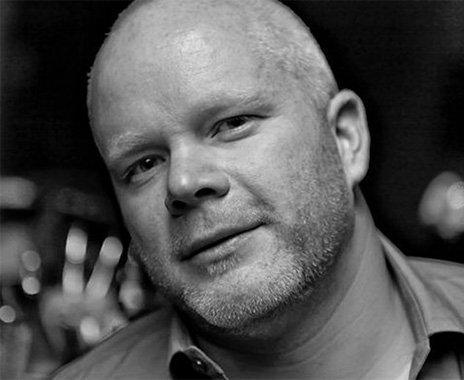Fast casual may be getting all the attention in foodservice today—especially with so many chefs opting to enter the space—but that doesn’t mean all new upstarts are following the fast-casual model. Just look at Los Angeles–based Top Round Roast Beef; the concept opened in 2013 by chefs Anthony Carron, Noah Ellis, Steven Fretz, and Jamie Tiampo is specifically sticking to fast-food hallmarks as it tries to emulate the nostalgic roast beef sandwich joints of the past.
As a nod to that nostalgia, the Top Round cofounders added an extensive frozen custard menu that includes shakes, sundaes, floats, and malts. Guests can build their own or order a signature item, such as the Grasshopper with peppermints, Oreos, and hot fudge; the Banana Cream Pie with bananas, Nilla wafers, fudge, and whipped cream; or the Tin Roof with cherries, marshmallow, salted peanuts, and hot fudge.
Carron—who is also cofounder of 800 Degrees Pizza—explains why frozen custard was important to the fast-food throwback, and how custard quality stands above other frozen treats.
Why did you decide to add frozen custard to the menu?
I’m from St. Louis and went to the same high school as [Shake Shack founder] Danny Meyer. We all went to the same famous frozen custard spot called Ted Drewes; there are two of them in St. Louis that have been there 70–80 years. It’s a St. Louis tradition to line up outside on hot summer nights, after baseball games, that kind of thing. We both had the same idea to expose a broader audience to that—he did it via Shake Shack, and we’re doing it here in L.A. via Top Round.
As a chef, do you feel like you have much room for innovation with your custard?
Oh yeah. The custard menu changes all the time. There’s so much you can do. We’ve got 30 different toppings and flavorings and chocolate sauces and this and that. So we change it around a lot.
What kind of outside-the-box ingredients and flavors do you use?
We have a pistachio milkshake on the menu all the time. Our custard is the base of our milkshakes, so we make them all hand-dipped. But, being in California, we wanted one signature, kind of cool, specifically California milkshake, so we did pistachio. We’ll do a Neapolitan for our secret menu, which is a pistachio, chocolate, and strawberry shake all poured into one cup.
How is custard different than ice cream?
Whenever you make a frozen dairy product, there’s a certain amount of air that gets whipped into it by the machinery, and that’s called overrun. If you start with a gallon of base and you have 100 percent overrun, you’ll end up with two gallons of ice cream. So cheap grocery store ice cream will have a really high overrun with a ton of air whipped into it, whereas a premium—like Häagen Dazs or Ben & Jerry’s—has really low overrun and less air whipped in. With frozen custard, there’s none. It’s really super dense, and the density is what gives it the feeling of creaminess.
Custard comes out in a log of totally frozen dairy product. The reason that’s important is if you let any ice cream sit without being beaten or agitated while it’s freezing, you’re going to form ice crystals. With custard, it’s agitated right up to the last second, all the way up to when it’s frozen solid, so it’s completely smooth, there are no ice crystals in it, and you never get that graininess on the tongue as you get with ice cream.
Why hasn’t custard taken off like ice cream and frozen yogurt?
In the Midwest, it’s much more common, and even on the East Coast. But I haven’t seen somebody really take it and make a chain out of it that’s gone national. Culver’s, maybe. But there hasn’t been a franchised frozen custard place. I think that’s because people don’t understand what it is, why it’s different, or why it’s better. Most people who try it realize it’s better than ice cream. There’s less air and less ice crystals—those are the two things that make ice cream bad when it goes bad. So custard is inherently better. Unless you grew up with it, you’re not going to know.
How big a role will custard play in Top Round’s growth?
It’s an important brand piece. It’s not super important on the revenue side. We’re trying to figure out ways to make it more prominent; it’s 10 or 15 percent of our sales, so it’s not huge in that way. But I think as a brand piece, it’s important.
Does a dessert menu lend to the idea of your restaurant being a dine-in experience?
Yeah. This location has that Southern California outdoor feel, too, but yeah, I think dessert is part of it. Also, kids love it, so it makes it more family friendly. I think the biggest custard consumers are kids.






